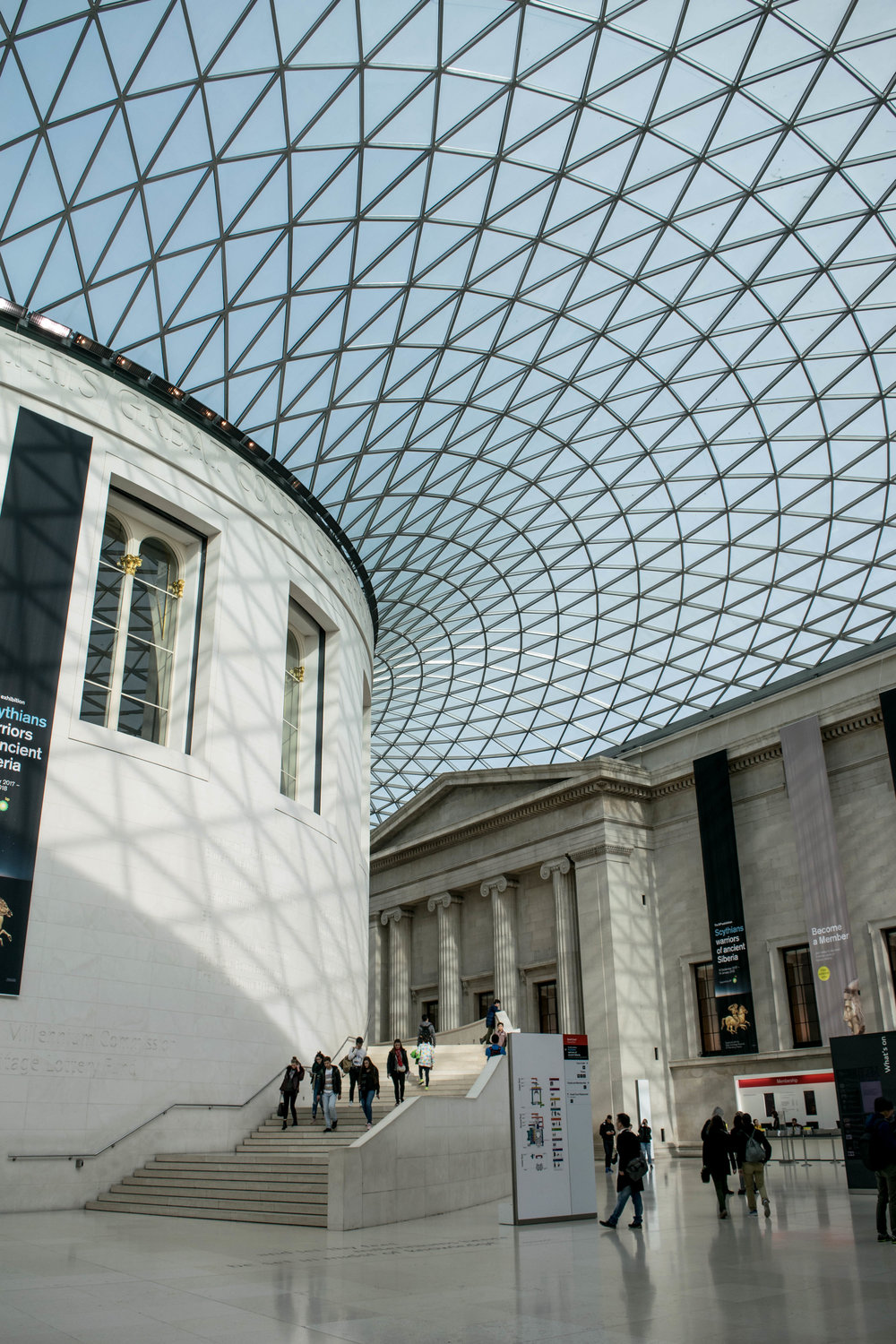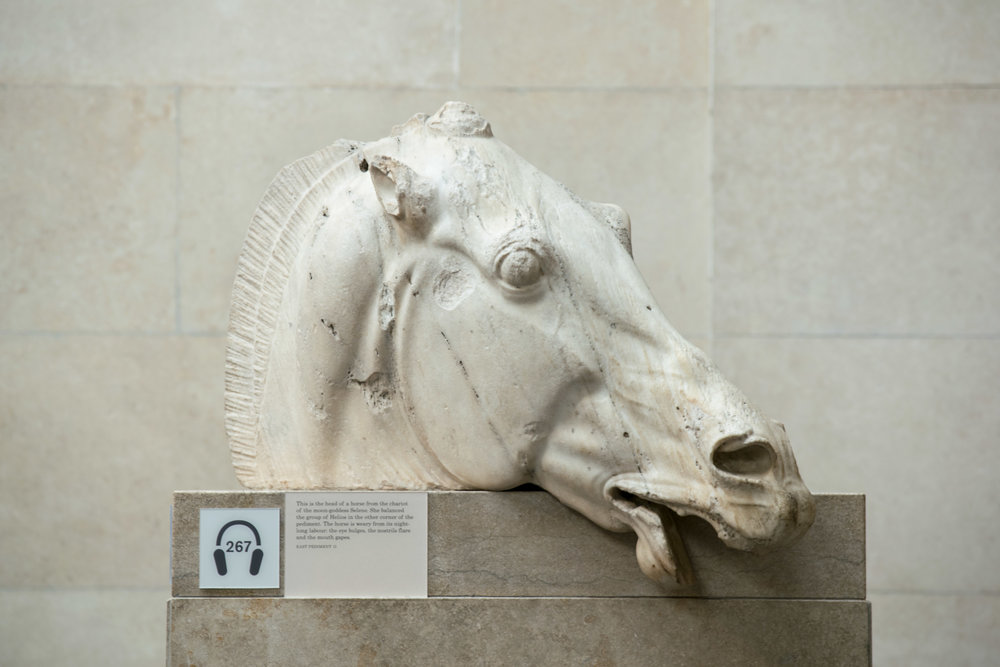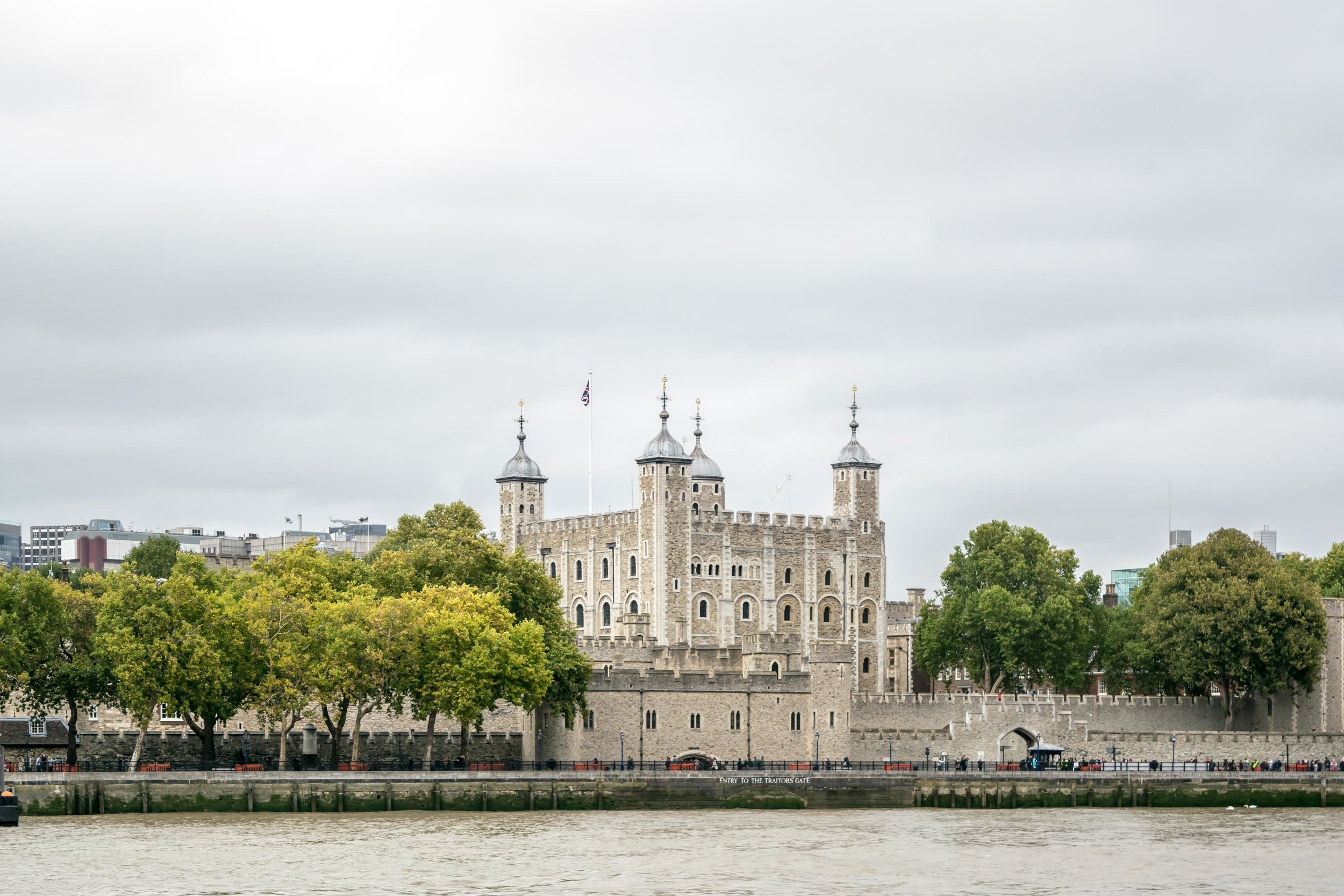A Short Guide to the British Museum: 10 Things to See
Are you planning a visit to London? Good choice! Between the fascinating architecture, varied history, and most delicious cups of tea, it's hard to decide what to fit into a city itinerary, especially if you're only in London for a few days! But to truly make the most of your visit, you'll want to check out at least one of London's popular national museums.
My top pick: the British Museum.
With a permanent collection of over 8 million works from all over the world, the British Museum is dedicated to human history, art, and culture, and is among the largest and most comprehensive collections in existence! While you could literally spend days upon days exploring every nook and cranny of this museum, listed below you'll find 10 things worth seeing in the British Museum that will make even the shortest of visits unforgettable.
When you first enter the British Museum, you'll probably find your natural instinct is to gaze up towards the sky. That's because the main entrance leads you into the Great Court (more on that later), a magnificent piece of architecture with a spectacular glass roof which acts as the centerpiece of the museum.
From here, you can branch out in all directions to begin exploring the museum's many exhibits.
#1. Egyptian Sculpture Gallery (Room 4)
The Egyptian Sculpture Gallery is a vast room and justly one of the most popular. You'll see depictions of kings, deities, and various symbolic objects that go as far back to the time of the Old Kingdom to the middle of the Roman Period.
There are also pieces of Egyptian temples and tombs, but perhaps the most impressive pieces of all are the giant stone busts of notable pharaohs, which you'll find towering over you near the center of the hall.
#2. Rosetta Stone (Room 4)
Also located within the Egyptian Sculpture Gallery is the world-famous Rosetta Stone, a giant slab inscribed with three versions of a decree issued at Memphis, Egypt in 196 BC. After it was discovered in 1799, this stone turned out to be one of the key factors in deciphering Egyptian hieroglyphs.
#3. Assyrian Gallery (Rooms 6-10)
Historical treasures such as sculptures and reliefs from the palaces and temples of ancient Assyria (modern northern Iraq) are displayed in this area of the museum. The reliefs appear to be in remarkably good condition for their age and it's incredible to see how many pieces have been preserved for visitors to gaze upon.
At one end of this section, you'll find two huge winged human-headed lions, statues which were placed at the entrance of the royal palace of King Ashurnasirpal II (883-859 BC) at Nimrud.
#4. Parthenon Sculptures (Room 18)
The Parthenon in Athens has a long and complex history. Originally built nearly 2,500 years ago as a temple dedicated to the Greek goddess Athena, the famous structure was converted into a church for the Virgin Mary of the Athenians and stayed that way for a thousand years. Later it became a a mosque, and finally an archaeological ruin. Over the course of many centuries, the building was altered and the original sculptures damaged.
The surviving sculptures have been divided among some of the great museums of the world, with a large collection housed in the British Museum.
To this day, the sculptures are still actively studied and researched by an international community of scholars to promote understanding both of ancient Greek culture and its role in the cultures of the world.
#5. Mexico (Room 27)
From prehistoric times, the regions in what we now consider Mexico have housed distinctive cultures, until the first European contact in the sixteenth century. In Room 27, you'll find early Mexican civilization is explored, which includes artifacts from the Classic Veracruz and Huastec cultures, as well as from the magnificent Maya city states of the first millennium AD.
The exhibit features rare objects, including highly-prized turquoise mosaic which dates all the way back to AD 1400–1521, and stone sculptures of female deities from AD 900-1450!
#6. Europe AD 300-1100 (Room 40)
The recently refurbished Medieval Europe gallery showcases many of the world’s greatest medieval treasures. British, European, and Byzantine objects tell the story of a period of great change when territorial wars and political turmoil shaped the continent we know today.
#7. Roman Britain (Room 49)
The Roman occupation of Britain dramatically transformed the material culture of the region. Imported goods and settlers from Europe, the Middle East, and North Africa created a richer, more diverse society. As such, an abundance of mosaics, wall paintings, sculpture, glassware, and metalwork was produced.
Additionally, the fusion of laws, currency, architecture, engineering, religion, and art of Rome mixed with the Iron Age of Britain created an individual identity to this time, which can be seen in the variety of original objects on display in this gallery today.
#8. Europe and Middle East 10,000-800 BC (Room 51)
Some of the objects on display in Room 51 show how the people of prehistoric Europe celebrated life and death and expressed their relationship with the natural world, the spirit world, and each other.
#9. Egyptian Death and Afterlife: Mummies (Rooms 62–63)
As you may already know, death and the afterlife was of great significance to ancient Egyptians. The process of mummification, as well as the Egyptian beliefs in magic and rituals are explored in these rooms. Along with actual mummies, you'll find ornate coffins, funeral masks, portraits, and other items which were buried with the deceased.
#10. The Great Court
Finally, no visit to the British Museum would be complete without admiring the grandeur of the Great Court, a vast, enclosed inner courtyard which is officially the largest covered public square in Europe.
Opened by Queen Elizabeth II the court has an intricate and unique glass roof which covers the entire court and surrounds the original circular Reading Room in the center. Located within this expansive area you'll also find a restaurant, bar, public washrooms, gift shops, and walkways leading to different areas of the museum.
British Museum Visitor Info
Like other national museums in London, the British Museum is entirely free to visit! But that means you can also expect big crowds and long line ups at the security check points (although when I visited, the line ups moved quite fast). If you're looking for a bit of solitude and quiet before the general crowds arrive, be there right at opening time.
Open daily from 10 am - 5:30 pm
Open until 8:30 pm on Fridays
Address: Great Russell Street, London WC1B 3DG, United Kingdom
Closest tube stations: Tottenham Court Road, Holborn, Russell Square, and Goodge Street






